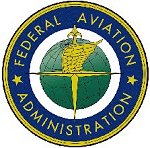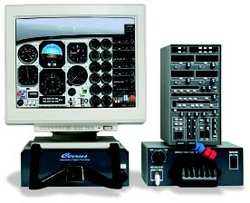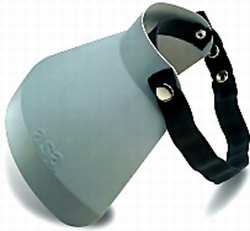Seeks Changes To Range Of Rules And Requirements
 ANN has learned the FAA
is seeking public comments on a notice of proposed rule making
(NPRM) regarding sweeping changes to FAR Parts 61, 91 and 141
-- the regulations governing airman certification, general
operating rules and flight schools.
ANN has learned the FAA
is seeking public comments on a notice of proposed rule making
(NPRM) regarding sweeping changes to FAR Parts 61, 91 and 141
-- the regulations governing airman certification, general
operating rules and flight schools.
The agency seeks to amend the training, qualification,
certification, and operating requirements for pilots, flight
instructors, ground instructors, and pilot schools. FAA says it
proposed the amendments to clarify, update, and correct existing
FARs and ensure flight crewmembers have the training and
qualifications to enable safe operation of aircraft.
Among the proposed changes:
The FAA proposes to amend 61.19(d), 61.197(a), and 61.199 to
allow the issuance of flight instructor certificates without an
expiration date in response to a request from the AOPA Air Safety
Foundation. The FAA says it was already working on a similar
change.
The FAA would still require flight instructors to renew their
privileges every 24 calendar months, but without requiring a new
flight instructor certificate. Instead, instructor renewal
applicants would document training via a logbook endorsement from a
flight instructor refresher clinic operator, or by the
FAA, showing completion and expiration dates. In lieu of the
logbook endorsement, the flight instructor renewal applicant could
simply receive a completion certificate or a stamp in their logbook
from a FIRC operator or from the FAA.
Those currently holding an instructor certificate with an
expiration date would keep it and show compliance via their
logbooks.
 The FAA also proposes to amend
61.51(g)(4), to ensure the rule allowing pilots to log instrument
time toward a rating, or for proficiency in a flight simulator
(FS), flight training device (FTD), or personal computer-based
aviation training device (PCATD) conforms to existing policy. As
always, an authorized instructor must be present and sign a pilot's
logbook for the time to count.
The FAA also proposes to amend
61.51(g)(4), to ensure the rule allowing pilots to log instrument
time toward a rating, or for proficiency in a flight simulator
(FS), flight training device (FTD), or personal computer-based
aviation training device (PCATD) conforms to existing policy. As
always, an authorized instructor must be present and sign a pilot's
logbook for the time to count.
The instructions for making logbook entries also would be
amended to reflect the proposal allowing the use of PCATDs to meet
the instrument time and recent flight experience requirements under
part 61.
The FAA provided examples of situations in which an authorized
instructor would be considered present, such as: the instructor is
seated at a center control panel in a flight simulation lab and is
monitoring each student’s performance from the control panel
display; where an instructor assigns a student to perform several
instrument tasks and then leaves the room, if the flight training
device has a monitoring and tracking system allowing the authorized
instructor to review the entire training session; and where one
authorized instructor monitors several students simultaneously in
the same room at a flight simulation lab.

The FAA has also proposed changes to the recent flight
experience requirements for instrument pilots. Under the proposal,
in order for an appropriately rated pilot to fly under IFR, within
the last six months he or she must have flown:
- Six instrument approaches consisting of both precision and
non-precision approaches
- One complete holding pattern at a radio station and one
complete holding pattern at an intersection or waypoint
- One hour of simulated cross-country practice operation that
involves intercepting and tracking courses through the use of
navigation systems while performing a takeoff phase, area departure
phase, enroute phase, area arrival phase, approach phase, and a
missed approach phase of flight
Current rules require only six instrument approaches, a practice
turn in holding and course tracking -- but no requirement to log
time other than that necessary to complete the other
requirements.
To soften the blow a bit, the FAA proposes allowing pilots to
complete the instrument experience requirements in an aircraft
and/or through use of an FS, FTD, or PCATD, but the time
requirement would then increase. Additionally, the simulation
devices would have to be representative of the category of aircraft
for the instrument rating privileges the pilot desires to
maintain.
Under this NPRM, the FAA chooses to differentiate between
FS/FTDs and PCATDs. For pilots using an FS or FTD exclusively, he
or she would have to log at least three hours within the 6 calendar
months before the date of the flight. For a PCATD, pilots must log
at least three hours within the 2 calendar months before the date
of the flight.

The agency says rules for PCATDs will remain more stringent
because they're a relatively new concept, and the FAA wants
to further evaluate their efficacy before granting equality with
FSs and FTDs.
The FAA says the training and tasks that may be approved for
performance on a PCATD would be listed in a proposed 61.65(f) and
it's specifically requesting comments on whether, and to what
extent, it should allow use of a PCATD for providing instrument
training for the instrument rating.
Additionally, the FAA wants to add governance regarding the use
of night vision goggles to the FARs. It would include rules setting
training requirements, recent flight experience requirements,
instructor qualification requirements and providing guidance on
logging time toward each.
The NPRM would also make changes in the way the FAA issues
ratings and certificates for ex-military pilots. Currently, on the
strength of military training and experience, ex-military pilots
may obtain a commercial ticket after passing only a written
examination. The FAA would extend that courtesy to
include ex-military instructor pilots by awarding a CFI
or CFII rating using the same rationale.
 ANN's Daily Aero-Term (04.24.24): Runway Lead-in Light System
ANN's Daily Aero-Term (04.24.24): Runway Lead-in Light System ANN's Daily Aero-Linx (04.24.24)
ANN's Daily Aero-Linx (04.24.24) Aero-FAQ: Dave Juwel's Aviation Marketing Stories -- ITBOA BNITBOB
Aero-FAQ: Dave Juwel's Aviation Marketing Stories -- ITBOA BNITBOB Classic Aero-TV: Best Seat in The House -- 'Inside' The AeroShell Aerobatic Team
Classic Aero-TV: Best Seat in The House -- 'Inside' The AeroShell Aerobatic Team Airborne Affordable Flyers 04.18.24: CarbonCub UL, Fisher, Affordable Flyer Expo
Airborne Affordable Flyers 04.18.24: CarbonCub UL, Fisher, Affordable Flyer Expo






